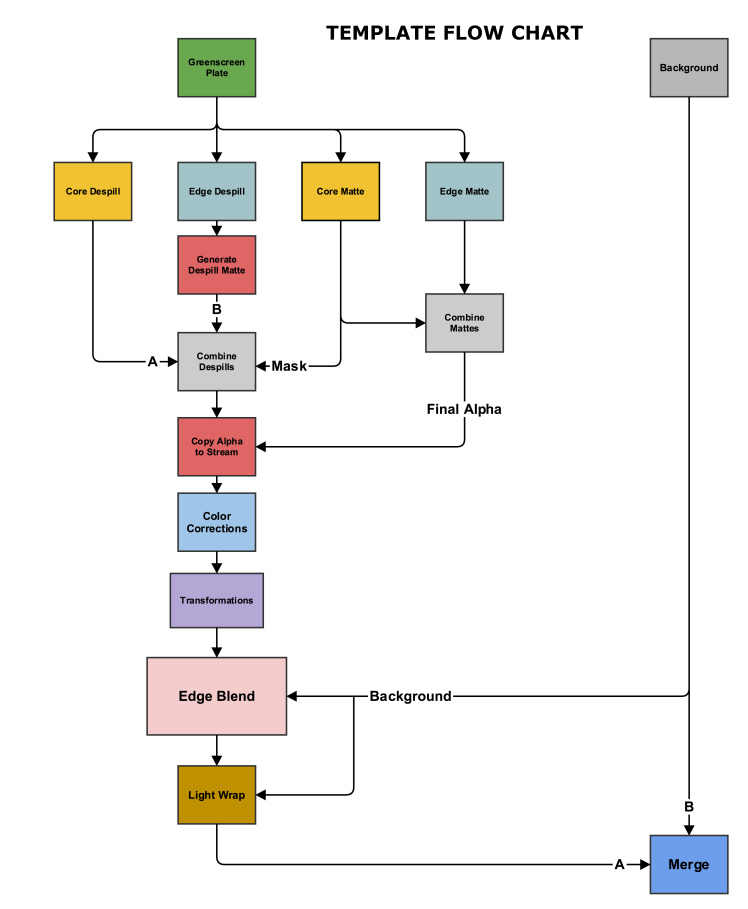Advanced Keying Breakdown: 4.1 – Template
0:00 – Introduction
4:30 – CC and transform after key
6:49 – CC and transform before key
12:03 – Advanced Keying Template flowchart
15:25 – Advanced Keying Template
40:10 – Advanced Keying Template Compressed
40:55 – Advanced Keying walkthrough script
41:59 – outro
Hey guys,
Sorry for the long overdue tutorial wrapping up this keying series. Here is the advanced keying template video, along with a flowchart and download link to the template scripts, which you can save to your toolsets for your own use in your nuke scripts.

Here is the Template Flow Chart from the video for you to download and review:
Here is the download to the Advanced Keying Template Package:
Advanced Keying Template Package Download
Or download from Nukepedia
Package contains:
Advanced_Keying_Template_v06_.nk
Advanced_Keying_Template_Compressed_v06_.nk
Advanced_Keying_Template_Walkthrough_v01_.nk
Some of you have asked for source materials for keying practice. I can provide you with a few free downloads so you can practice.
https://www.thefoundry.co.uk/support/user-guides/#nuke – download the nuke keying assets
http://www.thefoundry.co.uk/products/nuke/learn1/ – scroll down to 2d compositing | Compositing Basics. Click on the link that says Download Assets for Basic Workflows (535 MB). Here you will find the girl and desert BG found in this tutorial.
https://mango.blender.org/ – Tears of steal open source project. Free 4K footage for people to download and practice. Highly recommended. scroll down to the blog post called ALL 4K FRAMES – NOW AVAILABLE ON XIPH.ORG.
Finally, I want to thank everyone for your continued support, views, shares, comments, and emails. It all means a lot to me and you’ve certainly motivated me to keep going. Thank you.
As always, if there are any questions, just leave a comment or shoot me an email and I will try my best to respond. Hopefully with this series of tutorials, and now this template, you guys will be fully equipped to handle even the toughest of keys.
Until next time!
